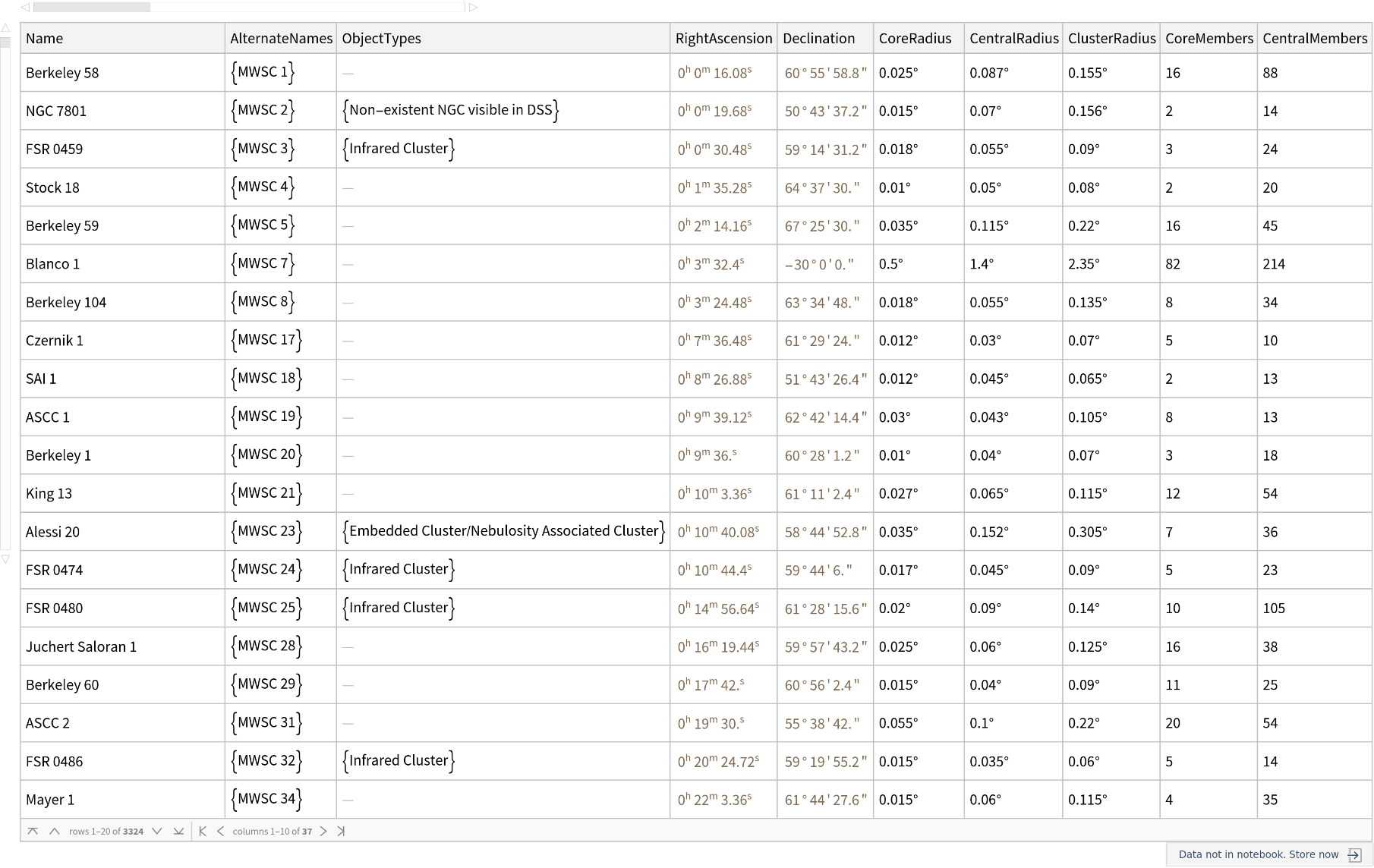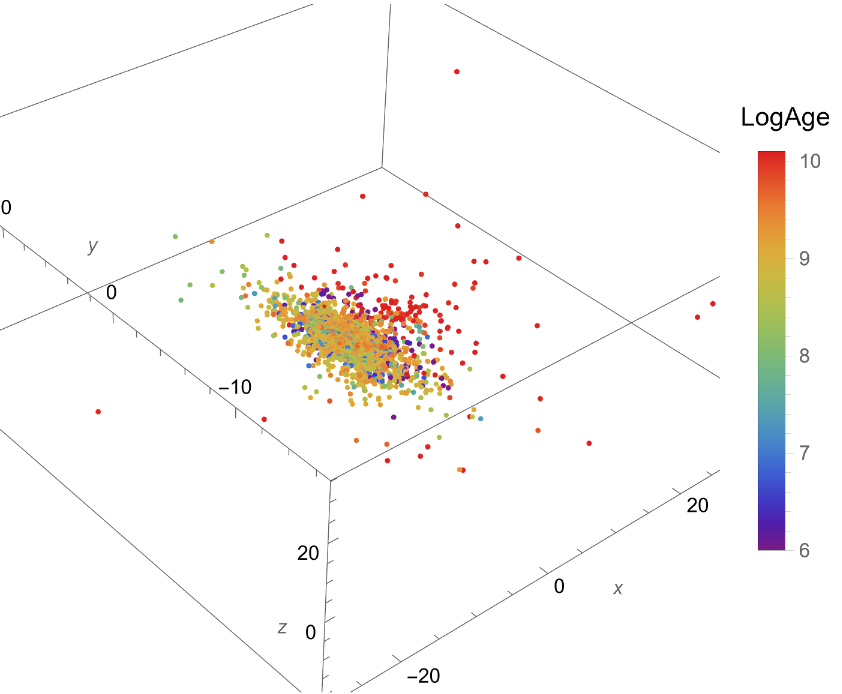| "Name" | name of the cluster |
| "AlternateNames" | alternate names of the cluster |
| "ObjectTypes" | types that apply to the cluster |
| "RightAscension" | right ascension in the ICRS system |
| "Declination" | declination in the ICRS system |
| "CoreRadius" | angular distance from the cluster center to the point where the slope of the radial density profile flattens |
| "CentralRadius" | angular distance from the cluster center to the point where the radial density profile flattens |
| "ClusterRadius" | total visible radius of the cluster |
| "CoreMembers" | number of stars inside the core radius |
| "CentralMembers" | number of stars inside the central radius |
| "ClusterMembers" | number of stars inside the cluster radius |
| "Distance" | distance from the sun to the cluster |
| "LogAge" | logarithm (base 10) of the age of the cluster |
| "LogAgeError" | error in the logarithm of the age |
| "AgeEmployedStars" | number of stars used to calculate the age |
| "ApparentDistanceModulus" | distance parameter infer from isochrone fitting |
| "ProperMotionRightAscension" | proper motion in right ascension times the cosine of declination |
| "ProperMotionDeclination" | proper motion in declination |
| "ProperMotionError" | root mean square error of the proper motion |
| "ProperMotionRightAscensionError" | error in the proper motion in right ascension |
| "ProperMotionDeclinationError" | error in the proper motion in declination |
| "RadialVelocity" | radial velocity |
| "RadialVelocityError" | error in radial velocity |
| "RadialVelocityEmployedStars" | number of stars used to calculate the radial velocity |
| "HMagnitudeCorrection" | correction in the magnitude H of the fitted isochrone |
| "BVColourExcess" | colour excess in B-V |
| "JKsColourExcess" | colour excess in J-Ks |
| "JHColourExcess" | colour excess in J-H |
| "KingCoreRadius" | core radius in the King model |
| "KingCoreRadiusError" | error in the King core radius |
| "KingTidalRadius" | tidal radius in the King model |
| "KingTidalRadiusError" | error in the King tidal radius |
| "KingNormalizationFactor" | normalization factor in the King model |
| "KingNormalizationFactorError" | error in the normalization factor |
| "Metallicity" | cluster metallicity[Fe/H] |
| "MetallicityError" | error in metallicity |
| "MetallicityEmployedStars" | number of stars used to calculate metallicity |

![template = "
from astropy import units as u
from astropy.coordinates import SkyCoord
c = SkyCoord(ra=[`ras`]*u.deg, dec=[`decs`]*u.deg, distance=[`dists`]*u.kpc, frame='icrs')
g = c.transform_to('galactic')
g.representation_type = 'cartesian'
[g.u.value, g.v.value, g.w.value]
";](https://www.wolframcloud.com/obj/resourcesystem/images/868/868d8f77-c0df-45a7-be99-924ab395d036/2ecff894c38d985a.png)
![pythonCode = StringTemplate[template][<|
"ras" -> StringRiffle[
QuantityMagnitude[Normal[data[All, "RightAscension"]], "AngularDegrees"], ","], "decs" -> StringRiffle[
QuantityMagnitude[Normal[data[All, "Declination"]], "AngularDegrees"], ","], "dists" -> StringRiffle[
QuantityMagnitude[Normal[data[All, "Distance"]], "Kiloparsecs"],
","]|>];](https://www.wolframcloud.com/obj/resourcesystem/images/868/868d8f77-c0df-45a7-be99-924ab395d036/7679441e5b2b0d20.png)

![ListPointPlot3D[List /@ Transpose[Normal /@ cartesianCoords], PlotStyle -> ColorData["Rainbow"] /@ Rescale@Normal@data[All, "LogAge"], PlotLegends -> BarLegend[{"Rainbow", MinMax@data[All, "LogAge"]}, LegendLabel -> "LogAge"], AxesLabel -> {x, y, z}, PlotRange -> {{-30, 39}, {-17, 20}, All}]](https://www.wolframcloud.com/obj/resourcesystem/images/868/868d8f77-c0df-45a7-be99-924ab395d036/2241d758aee382d7.png)
